IMED1001 - Membrane Transport (I and II)
1/37
There's no tags or description
Looks like no tags are added yet.
Name | Mastery | Learn | Test | Matching | Spaced |
|---|
No study sessions yet.
38 Terms
Functions of Cell Membrane Transport
Transport of:
- Nutrients
- Waste Management
- Salts and Water
- Messengers
- Charge
- Motillity
Flux (J)
number of molecules passing through a certain area in a given amount of time. Directly proportional to concentration gradeint/distance
Things that can and cant pass through cell membrane (polar or non-polar and size vs charge)
- Non-polar: permeable
- More Polar: less permeable
- Bigger: less permeable
- Charged: not permeable
Factors affecting rate of net diffusion
- when conc. gradient increases, rate of diffusion increases.
- when SA of membrane increases, rate of diffusion increases
- when lipid solubility increases, rate of diffusion increases
- when molecular weight increases, rate of diffusion decreases
- when distance (membrane thickness) a particle needs to travel increases, rate of diffusion decreases
Osmosis in the Cell Membrane
- cells have water channels: aquaporins
- These allow bidirectional diffusion (osmosis) of H2O, hihgly specific and increases rate of diffusion.
Tonicity
- whether a cell swells or shrinks due to osmosis
- Isotonic: interstitial fluid is the same concentration as cytosol (no net movement of water) (as)
- Hypotonic: interstitial fluid is less concentrated then cytosol (water enters cell, hence cell swells) (under)
- Hypertonic: interstitial fluid is more concentrated then cytosol (water leaves cell, hence cell shrinks) (more than)
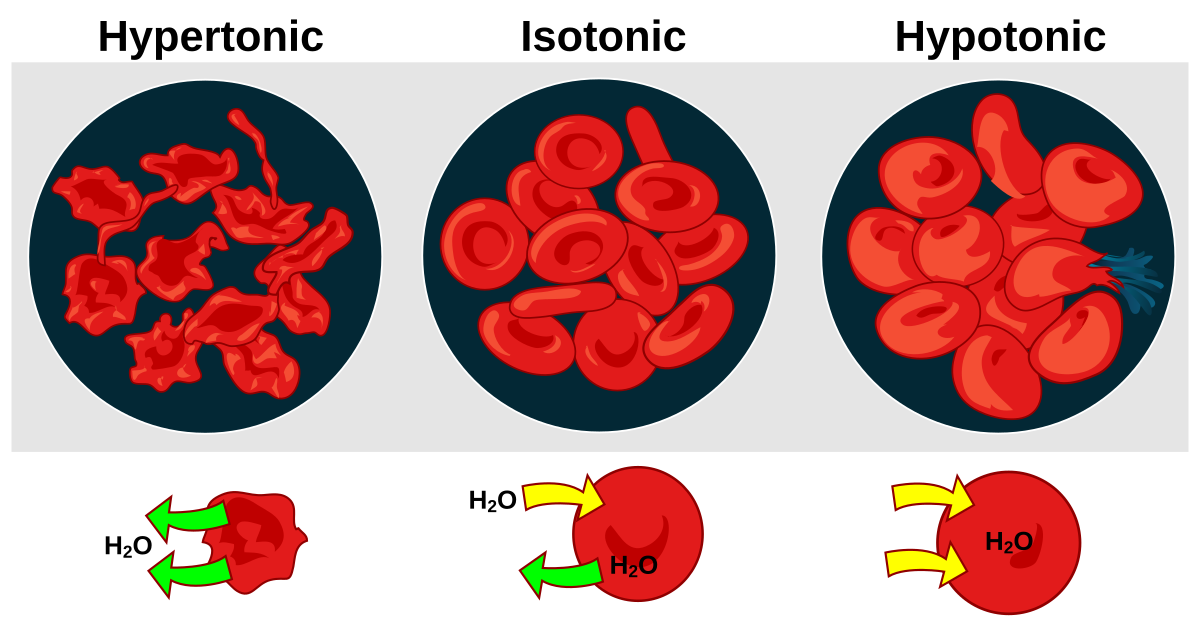
Trend in Tonicity of Red Blood Cells
- As ion concentration in extracellular space increases, cell swells/shrinks more
Osmolarity vs Tonicity
- Osmolarity (measured in osmols/L) and tonicity (whether a cell shrinks or swells) can be the same thing
- An iso-osmolar solution is not always isotonic
Ionic Composition of Extracellular Fluid
- Cations: Majority Na+, small amt of K+ and other cations
- Anions: HCO3-, Cl-, and other anions
Ionic Composition of Intracellular Fluid
- Cations: small amount of Na+, large amount of K+, other cations
- Anions: PO4-, protein anions, other anions
MOsmol/L
- unit for osmolarity
- remember that water diffuses from an area of low osmotic pressure to high osmotic pressure
- hence water will diffuse from an area with a low osmolarity to high osmolarity
Pores and Channels
- pores and channels increase permeability
- They are highly Specific: based on size, shape and charge of the molecule entering
- Channels are gated pores allow control of permeability
- channels have specific shape, specific charge and specific charge distribution
- Pores are non gated channels (always open)
- do not show saturation
Ways that Channels can be gated
- Voltage Gated
- Ligand Gated (extracellular ligand)
- Ligand Gated (intracellular ligand)
- mechanically gated
Rate of transport in pores and channels
- Higher concentration gradient = higher rate of diffusion
- in simple diffusion there is no rate limit
- pores and channels increase permeability but still simple diffusion
Carriers (transporters)
- never open to the outside of the cell and the inside of the cell at the same time
- carriers bind the solute and change conformation
- very specific because there is a specific binding site
- energy still from the concentration gradient
- rate limited by speed of each carrier (speed to close and reopen to other side) and total number of carriers
- can be saturated
Rate of flux between carrier mediated vs diffusion
- Carrier mediated transport shows saturation (max transport rate)
- Fixed number of membrane bound carriers for each solute
- limited speed at which the carrier can operate
Km
Substrate concentration at 1/2 Vmax
Factors affecting carrier protein rate of transport
- transport rate is temperature dependent
- transport rate can be reduced by competition for binding sites
- can be blocked pharmacoligically by specific drugs and toxins
Types of Carrier Proteins (NAMING ONLY)
Uniporters, Co-transporters
Uniporters
transport a single solute from one side of a membrane to another

Co-transporters
transfer of one solute depends on the simultaneous transport of a second solute (coupled transport)
- they have a transported molecule but also a co-transported ion
- have two types of co-transporters: symporters and antiporters
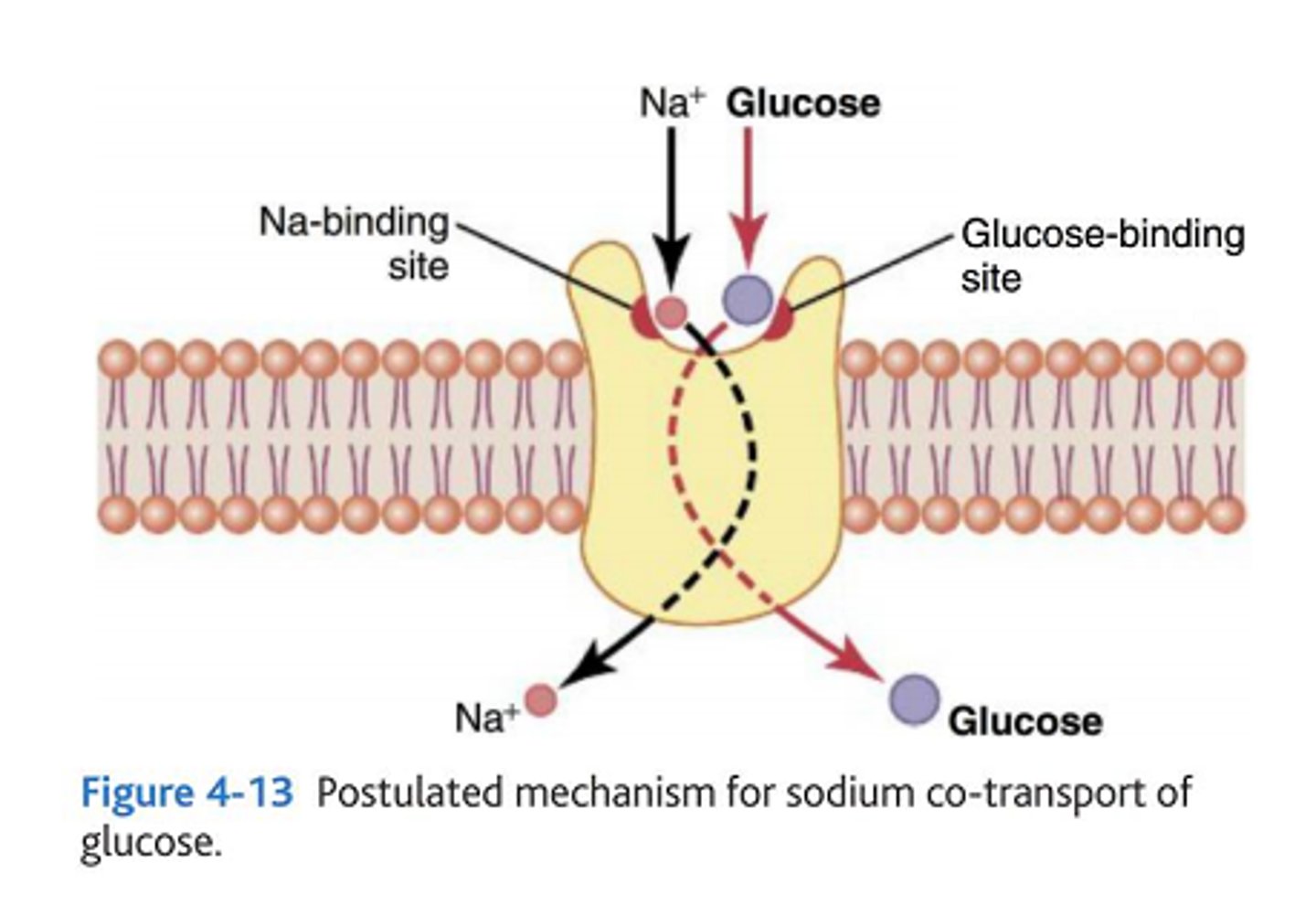
Types of coupled transport reactions (NAMING ONLY)
Symporters, Antiporters
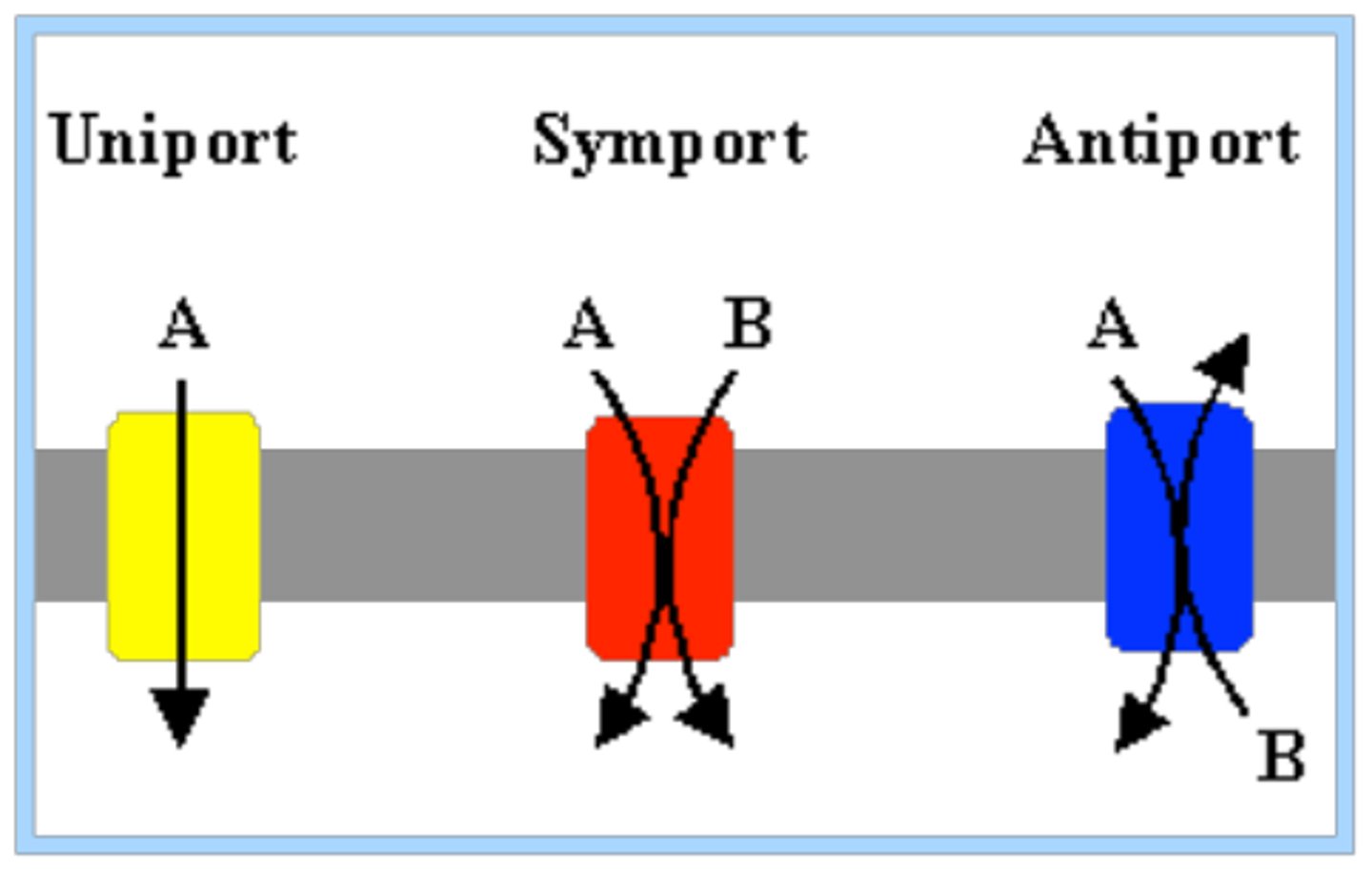
Symporters
transfer second solute in the same direction as the first
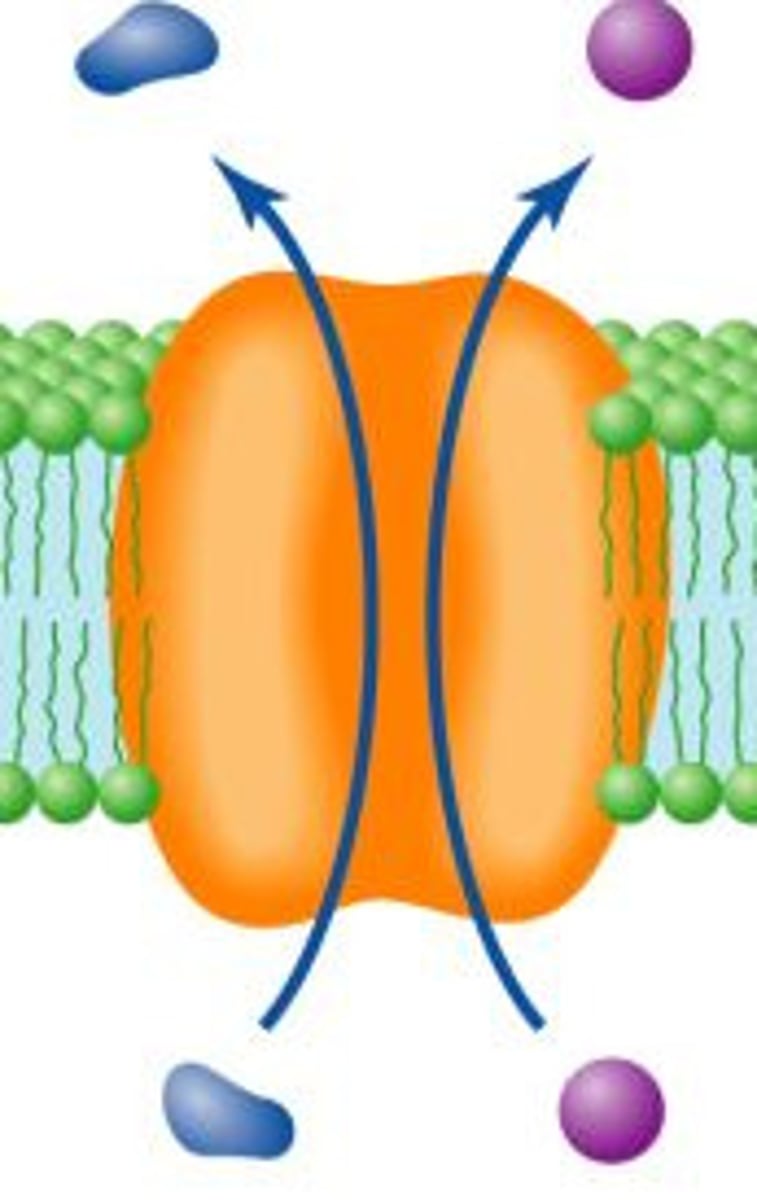
Antiporters
transfer second solute in the opposite direction as the first
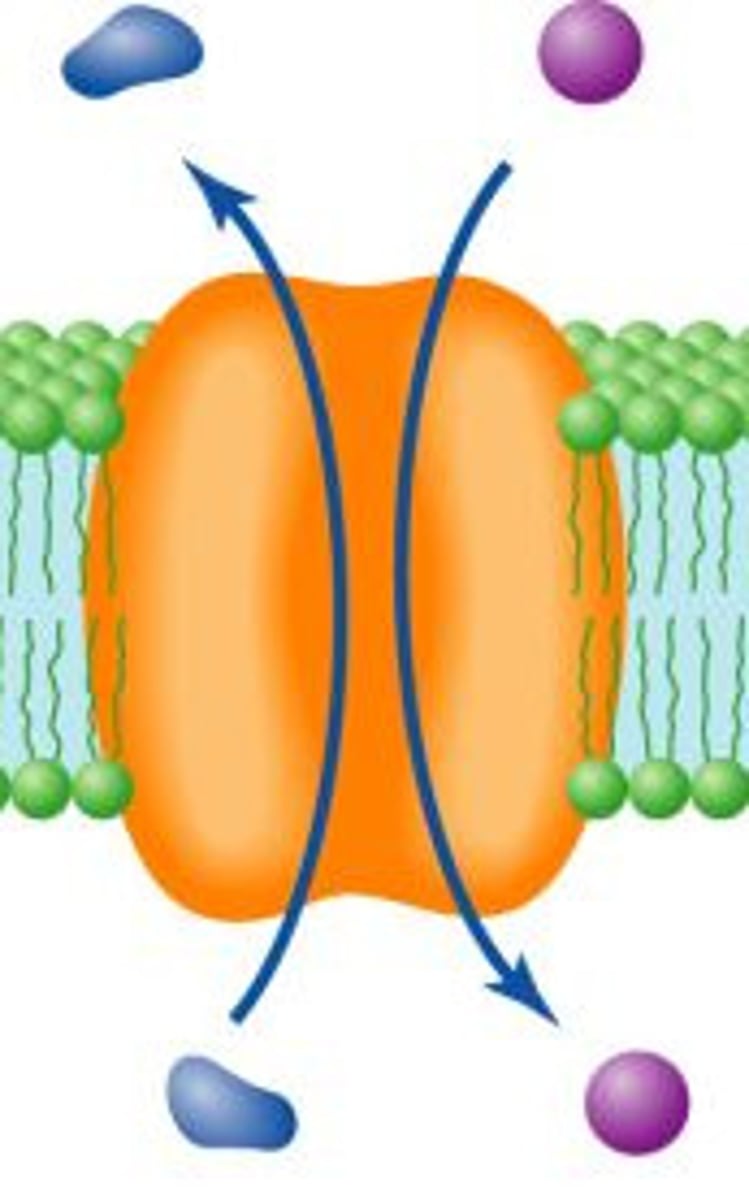
SGLT1 (sodium dependent glucose transporter)
- Uses a sodium gradient to scavenge for glucose (against its concentration gradient)
- Na+ and glucose bind cooperatively
- need both
- binding causes a conformational change
- can work in both directions (based on strongest concentration gradient)
IT INVOLVES:
- active transport of Na+ down its concentration gradient
- secondary transport of glucose against its concentration gradient
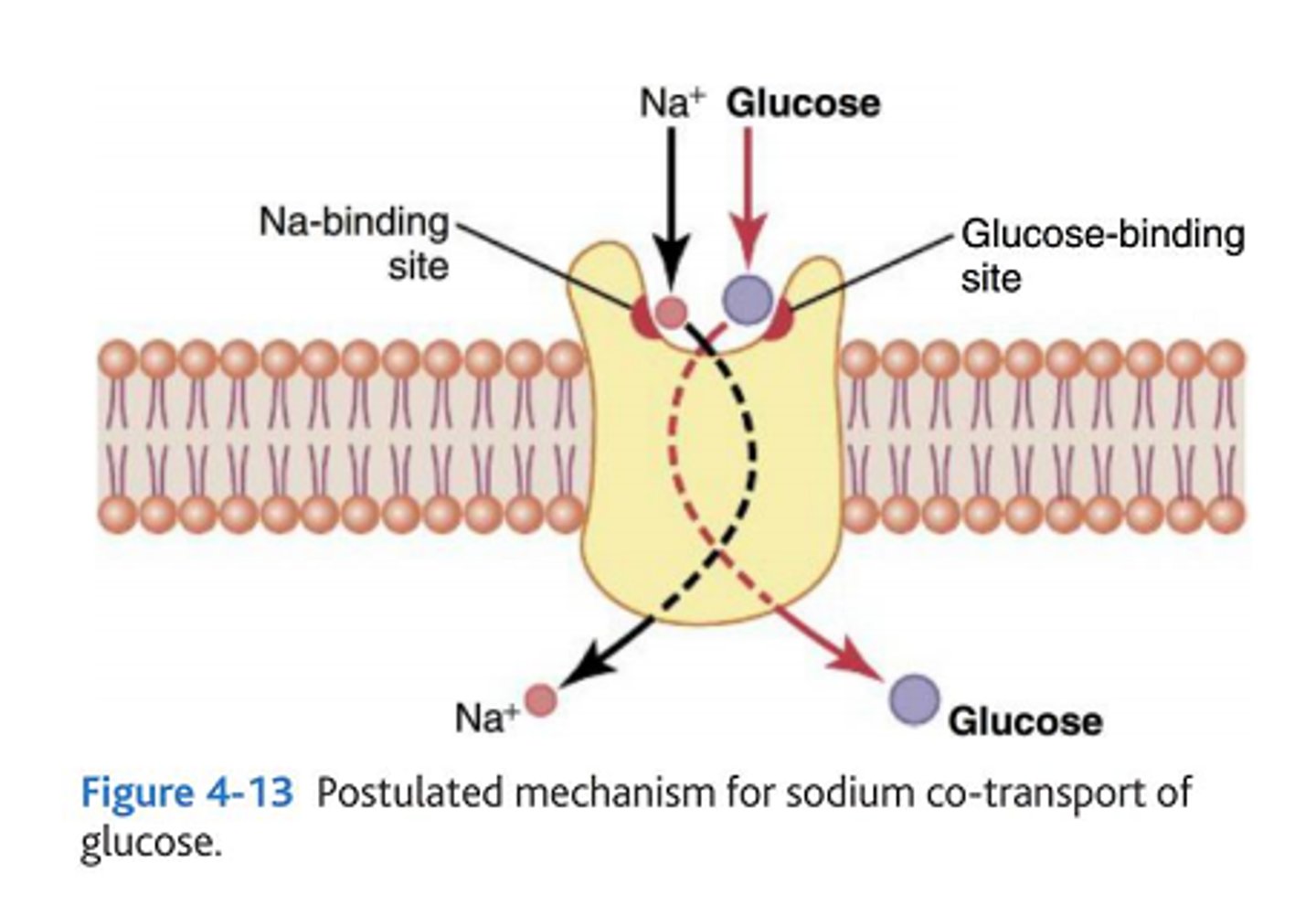
Active Transport - Pumps
- pumps use chemical potential energy in ATP to move molecules uphill against chemical potential
- ATPases are enzymes that hydrolyse ATP to ADP and phosphate
- substance pumped against its concentration gradient
- phosphorylation triggers conformational change
Types of Pumps (NAMING ONLY)
P-type Pump, V-proton Pump (no needed to know), F-type synthase (no need to know), ABC transporter
P-type Pump
- phosphorylate themselves
- establish ion gradients across membranes
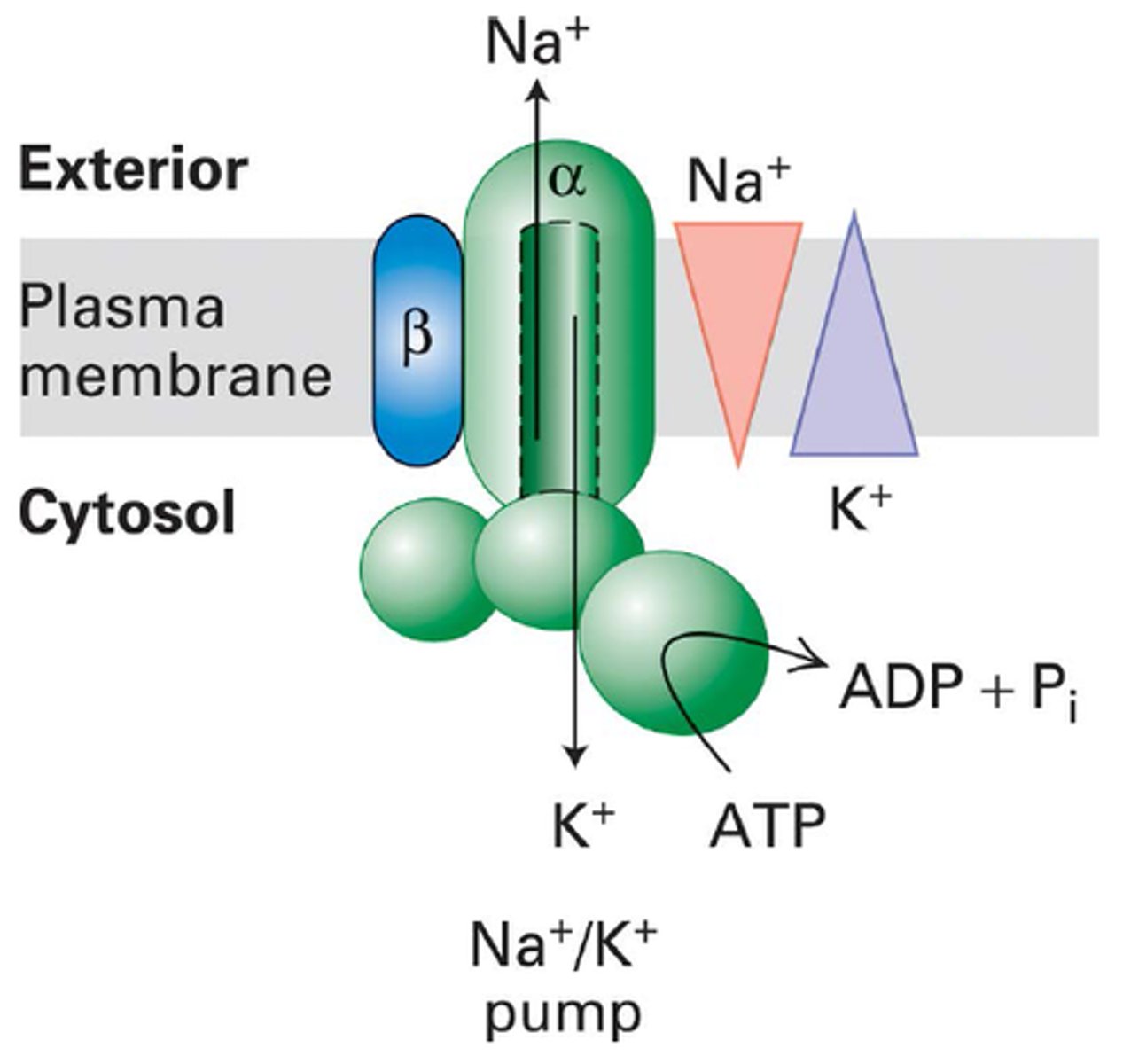
ABC transporter
- ATP Binding Casette (ABC is the acronym)
- Pump more complex molecules (e.g cholesterol)
- bind specific molecules and use ATP energy to transport them across the phospholipid bilayers
- Directional
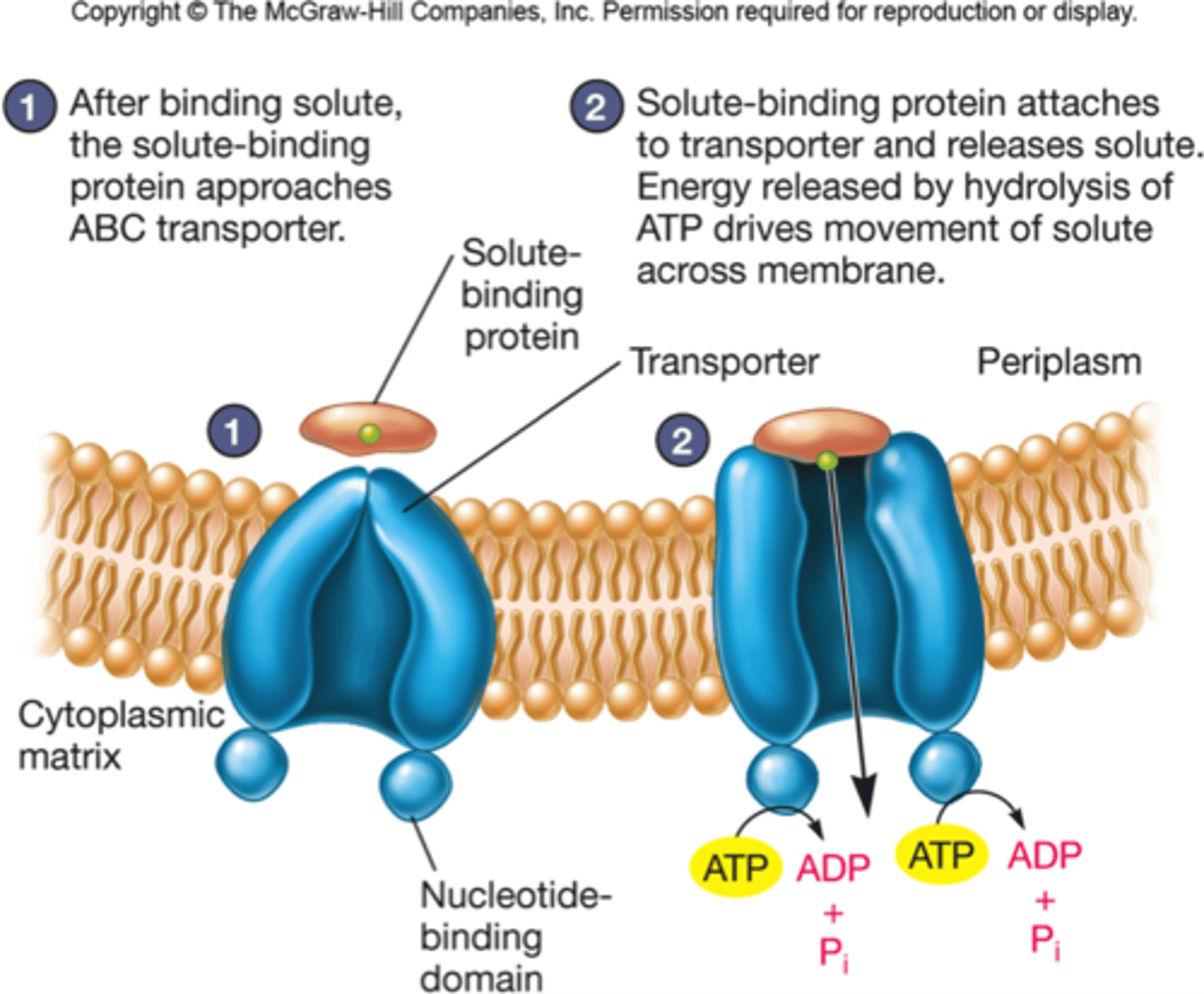
Na+/K+ Pump (Active Transport)
- all cells have this pump
- Na+-K+ pump uses ATP to move Na+ and K+ against concentration gradients
- Na+/K+ pump maintains intra and extracellular Na+ and K+ concentrations
- Pumps 3 Na+ out and 2 K+ in per cycle
- uses 1 ATP molecule
- electrogenic: net movement of +ve charge out of cell = creates electrical potential (inside cell is slightly more negative then outside)
Calcium Pump
- intracellular [Ca2+] kept low by pumps
- Ca2+ pumps in plasma membrane
- Ca2+ pumps in plasma sarcoplasmic reticulum
- low Ca2+ means that Ca2+ can be used as a signal
Secondary Active Transport
- secondary active transport uses a pump (ATPase) and a carrier (symport/antiport)
Using Na+ gradient to drive glucose uptake
- glucose uptake taken by a cell in GI tract
- primary active transport keeps cell Na+ low
- Na+ linked to glucose entry on apical side (Na+ gradient powers glucose uptake into cell)
- high glucose in cell powers faciliated diffusion by carrier on basolateral side
Exocytosis
- Process by which a cell releases large amounts of material
- can be constitutive or regulated
Endocytosis
- Big things (solids) (Phagocytosis) or little things (fluids) (Pinocytosis)
- can be highly specific (receptor-mediated) (receptor-mediated endocytosis where cells can acquire things with high specificity
Vesicles and Coating
- vesicles are coated by coat proteins
- coat proteins send vesicles on their way (it tells them where to go, either golgi apparatus
- Clathrin: golgi to plasma membrane and vice versa
- COPI (its like saying Cop one): Golgi (COP = coat protein)
- COPII (cop two): ER
Rabs
Once coat proteins tell vesicles where to go:
- Rabs guide transport vesicles to their target membrane
- Rabs bind rab effectors (tether to membrane)
SNAREs
- SNAREs mediate fusion
- v-SNAREs on vesicle
- t-SNAREs on target membrane